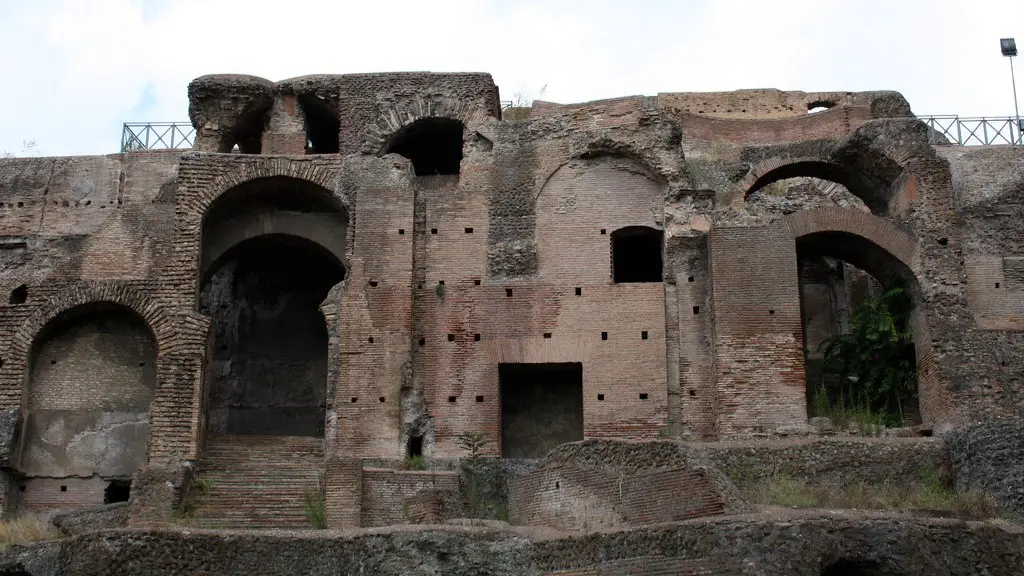When Did the Ancient Rome End
The Fall of the Western Roman Empire occurred in 476 AD, when Odoacer, a Germanic Barbarian king, led an uprising against Romulus Augustus, the last emperor of Rome. This event marked the end of Ancient Rome, and the beginning of the Middle Ages. The fall of Rome was gradual rather than sudden, and there were many underlying causes, including political corruption and incompetence, currency devaluation, overexpansion, external invasions, and internal conflicts.
Romulus Augustus, the last emperor of Rome, was famously overthrown by Odoacer in 476 AD. During his reign, the western part of the empire had declined to the point of near collapse due to a variety of factors. This included political corruption, economic instability, overextension of military campaigns, and a severe currency devaluation.
The currency devaluation had a particularly devastating effect on the Roman economy. As inflation rose, citizens had to pay higher taxes to the empire. This made them increasingly disgruntled and eventually led to a decreased confidence in the empire, which further destabilized the economy.
Overextension of military campaigns was another major contributor to the fall of the Roman Empire. Over the centuries, they had attempted to expand their borders far beyond their capacity to sustain, resulting in overextended resources and financial ruin. This weakened the Roman military and allowed for their more powerful adversaries, such as the Germanic Barbarians, to gain an upper hand.
Internal conflicts also played a role in Rome’s downfall. The constant power struggle between rival factions within the Roman government, including the senate and emperor, further weakened the security of the empire and further sowed distrust within the population.
Exterior invasions were another major factor in the fall of the Roman Empire. Rome was frequently attacked and plundered by its neighbors, notably, the Germanic Barbarians, who eventually claimed victory in the final fall of the empire in 476 AD.
The Aftermath of Rome’s Fall
The fall of Rome brought an end to the imperial system, and brought about the beginning of the Middle Ages. In the centuries that followed, new forms of government arose in Europe, including feudalism and theocracy.
The fall of Rome also had a major impact on philosophy, science, architecture, and literature. The intellectual traditions of Ancient Greece were preserved and further developed in the new Christianized societies of the Middle Ages, leading to a period of Renaissance and Reformation in the 16th century.
The fall of Rome also resulted in a period of social and economic instability. Without the structural support of the imperial system, citizens were left vulnerable to exploitation by feudal lords and other forms of authority. This led to a decrease in quality of life, as well as wide-spread poverty, famine, and disease.
The end of Ancient Rome also resulted in a period of increased religious intolerance, as the Roman Catholic Church sought to assert its authority over the new European societies in the wake of the empire’s fall. This resulted in a period of strife between various religious sects, and the persecution of minorities, including Jews and heretics.
History’s Opinion On Rome’s Fall
The fall of the Roman Empire is one of the most-studied events in history, and opinions on its causes remain divided. Some historians believe that the empire was doomed from the start, due to the inherent instability of its imperial system, while others view its fall as the result of a gradual decline, due to a multitude of underlying factors, both internal and external.
The majority of historians agree that the fall of Rome was caused by its own internal weaknesses, such as political corruption, economic instability, and monotheistic intolerance. It is also believed that external forces, such as the invasions of the Germanic Barbarians and the subsequent economic and political changes that followed, played a significant role in the empire’s demise.
Historians also agree that the fall of Rome marked the end of a golden era, and the beginning of a much darker period in history known as the Middle Ages. Despite its eventual end, the Roman Empire made many contributions to Western culture, including law, engineering, architecture, and literature.
Modern Impact of Rome’s Fall
The fall of the Roman Empire continues to have an impact on modern society. Its legacy is seen in the many aspects of European life that it influenced, including law, engineering, architecture, and literature. Because of this, the Roman Empire remains a source of fascination to this day.
Furthermore, the lessons of Rome’s history continue to be studied, in order to better understand the causes and long-term effects of state collapse. This can help modern societies to identify potential risk factors and prevent future collapse.
Contemporary historians have also sought to better understand the fall of Rome in an attempt to draw comparisons with modern-day nations and empires. This allows for the identification of any potential warning signs and provides the opportunity for corrective action to be taken before it is too late.
Reasons For Rome’s Fall
Ultimately, the fall of the Roman Empire was due to a combination of internal and external factors. This includes political corruption, overextension of military campaigns, instability resulting from currency devaluation and rising taxes, external invasions, and monotheistic intolerance.
By understanding the causes and consequences of Rome’s downfall, modern societies can better prepare themselves for similar potential risks. Furthermore, the legacy of the Roman Empire continues to influence the world to this day, and its lessons remain relevant to those who seek to understand its cause and aftermath.
Legacy of Rome
The Roman Empire remains one of the most influential empires in history. It left an indelible mark on Western culture, and its legacy is still seen today in the many aspects of society it influenced, from law, engineering, and architecture, to literature, philosophy, and science.
The fall of Rome was not only a devastating event in its own time, but it continued to have major reverberations through the centuries that followed. As such, it remains one of the most-studied events in history, and a source of great fascination to this day.
Societal Impact of Rome’s Fall
The fall of Rome also had a profound impact on the societies that emerged in its wake. Post-Roman Europe was characterized by a period of social, political, and economic instability, as well as increased religious intolerance and persecution of minorities. This period of upheaval laid the foundations for the eventual rise of the modern nation-state.
The fall of Rome is also remembered as a major turning point in world history. It marked a shift from the classical world of ancient Greece and Rome to the medieval age, which was characterized by a rise in religious fervor and increased superstition. This period also saw advances in science, philosophy, and architecture, which laid the foundations for the Renaissance and Reformation of the 16th century.
The fall of the Roman Empire thus remains a source of great fascination and a source of study for contemporary historians. By examining its causes and consequences, modern societies can not only appreciate its legacy but also gain greater insight into the nature of state decline, and take steps to prevent similar occurrences in the future.





